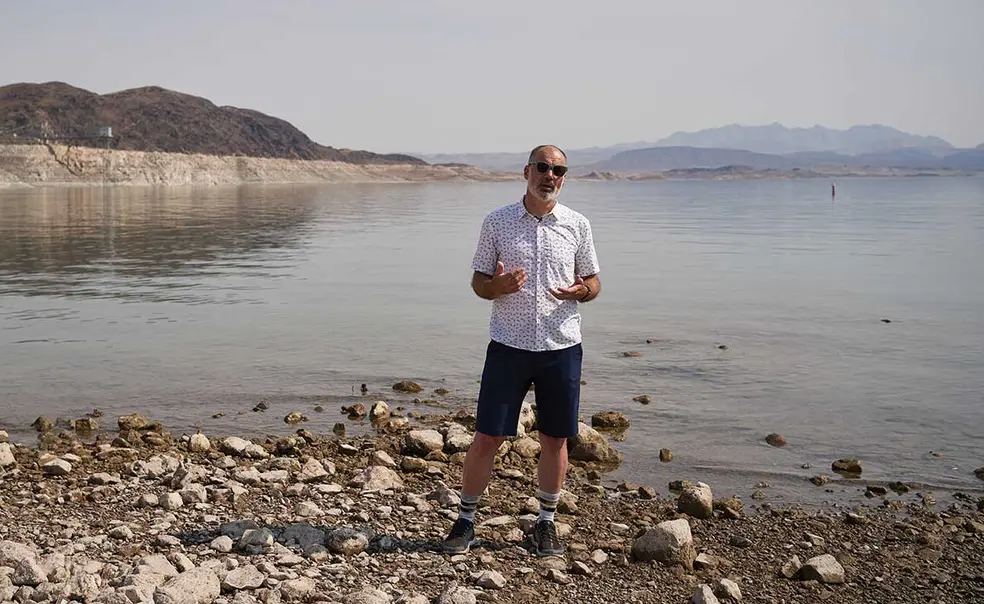Princeton Engineering Professors Address Climate’s Impact on Water
Climate change is altering the distribution of water worldwide
Water seemed to be missing. Rocky Mountain snowmelt feeding the Colorado River system had been at least average for the last five years, but the river’s huge manmade reservoirs — which serve 40 million people — continued falling, reaching lows not seen since the 1930s.
Somehow, the system was losing water. Princeton professor Reed Maxwell found the leak.
Maxwell began working at the University in July 2020 after 12 years at the Colorado School of Mines. He had worked for 20 years making connections — between disciplines, natural systems, and geographies — to answer continental-scale questions about water, with implications about the future habitability of where we live.
The Colorado’s missing water, Maxwell discovered, was being sucked up by the roots of trees and plants from streamside areas and shallow groundwater around the upper branches of the region’s waterways. Evapotranspiration — releasing water vapor from plants — generally carries more water than rivers and streams, sending it directly to the sky. With a one-degree increase in average temperature in the West, that skyward flow of water unbalanced the Colorado River’s equation of water supply. Maxwell’s field work and modeling showed that the vast Lake Powell and Lake Mead reservoirs had been emptied by leaves.
The West’s megadrought has lasted 22 years. This work suggests it may not end.
Climate change is altering the distribution of water worldwide, but the complexity of modeling hydrology on that scale has held back our full understanding. The first climate models omitted the issue of water flow for simplicity. Princeton’s Syukuro Manabe, who wrote those first models (and won the 2021 Nobel Prize for Physics for that work), imagined water falling out of the system as if through a hole in a bucket.
“The bucket was leaky, because it was actually leaking underground and going away in Manabe’s early models,” Maxwell says. “But in the real system, water moves, and now we’re tracking it all the way into deep groundwater or to a stream or wherever it ends up.”
It was a huge task to model water flows for the entire country. Maxwell’s team worked for years to assemble a workable dataset on soil and rock extending 400 meters below the surface to predict underground water flow and other parameters.
“My work is really kind of driven around fundamental questions,” Maxwell says. For example, what will happen to the nation’s water supply with 1.5 degrees Celsius of warming? “One of the things that we found was that the eastern U.S. effects of warming are happening faster,” he says, noting this allows for more evaporation, resulting in more water in the atmosphere.
The model showed the water table under the eastern states dropping as water migrated into the atmosphere — an amount similar to the content of Lake Erie. In September, that water disastrously returned to the ground, when Hurricane Ida dumped extreme rainfall on New Jersey (more than 6 inches in Princeton, following 5 inches from Hurricane Henri 10 days earlier). Flooding from Ida killed 30 people in the state.
“Increased moisture feeds the remnant of the storm,” he says. “It doesn’t take much to make the difference between a storm that peters out over land and dissipates versus a storm that is supplied with terrestrial evaporation all the way through. It’s these increased feedbacks that are unfortunately going to become more common.”
But his work could help address that problem. In collaboration with partners at the University of Arizona, Maxwell and Princeton’s Peter Melchior received a $5 million grant from the National Science Foundation to adapt the model for local decision-makers. They are using machine learning to predict patterns from the supercomputer’s output, creating a portable version of the model that hydrologists in any jurisdiction can use on their own computers to test alternative futures.
This new work closes a loop. Maxwell linked his discipline’s fractured understanding of the nation’s waters into a synthesis that reveals a picture of the entire nation, and now he is returning those findings to the local scale. “To me, it just looked like one continuous system that should be connected,” he says.












No responses yet